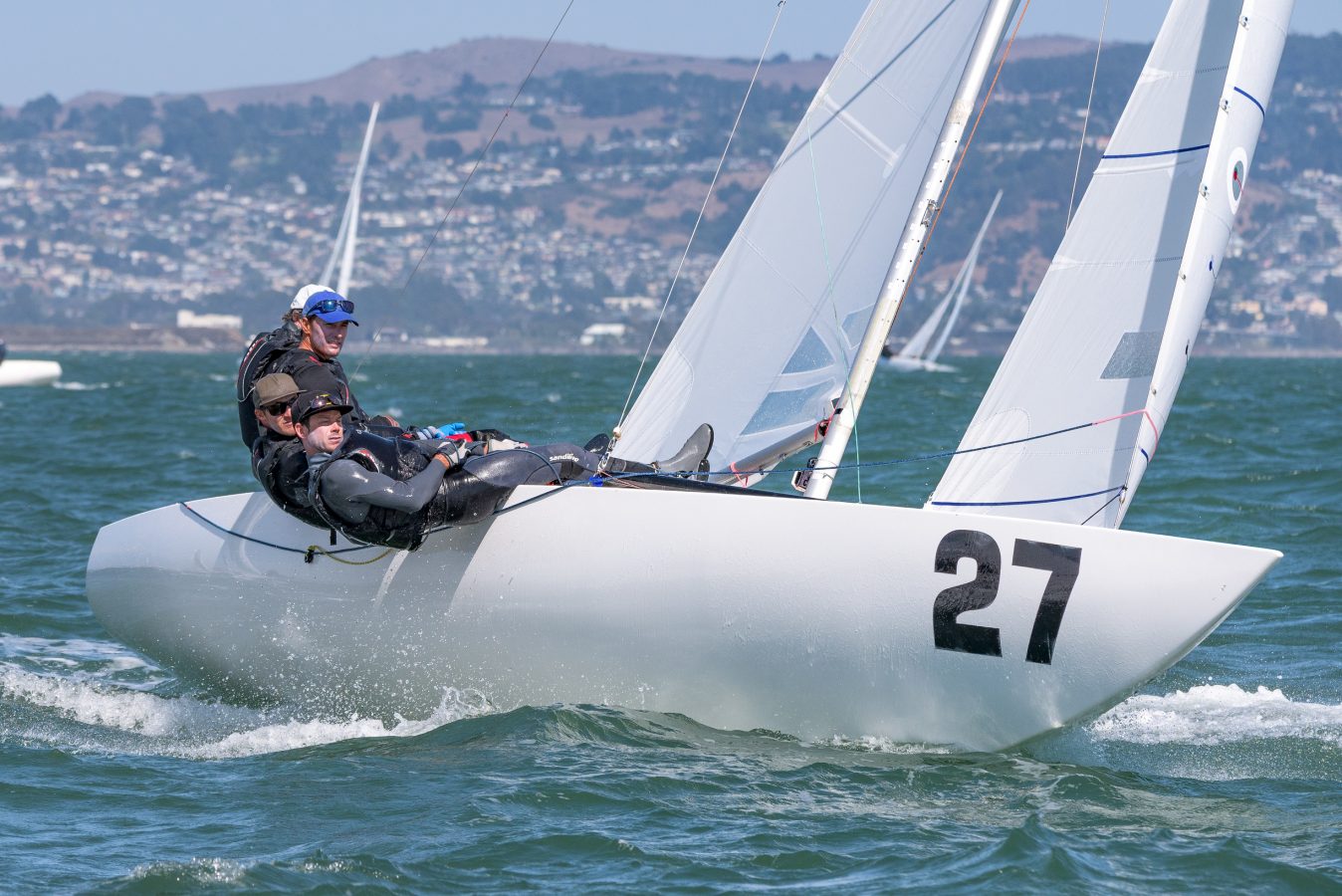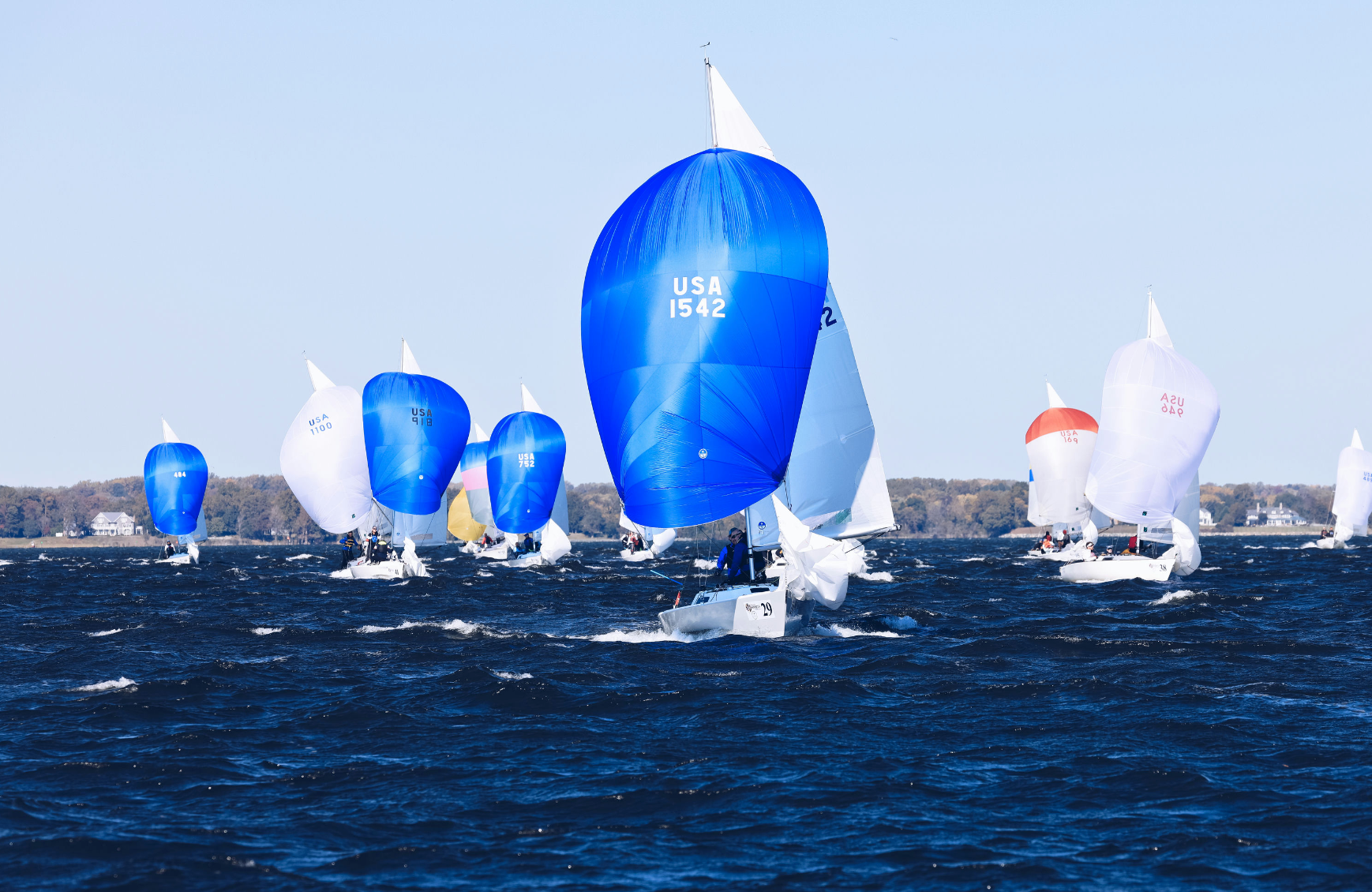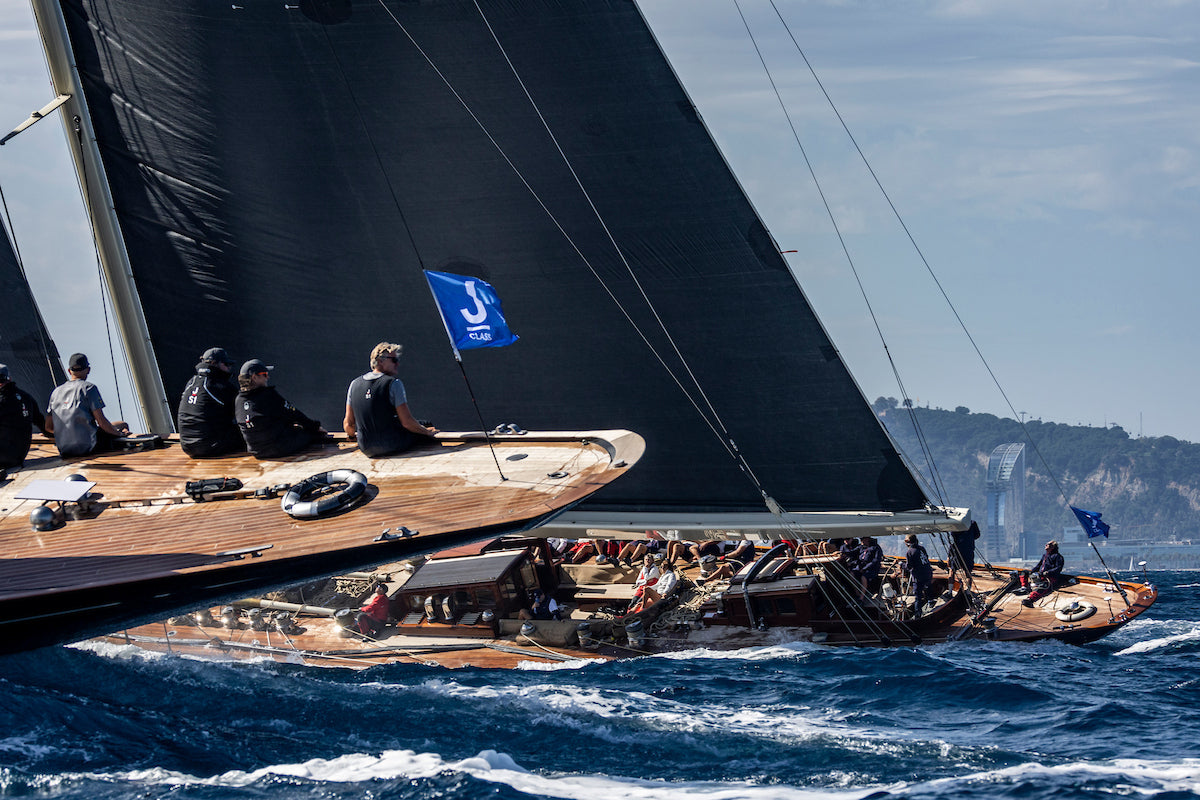ETCHELLS WORLDS INTERVIEW
ETCHELLS WORLDS INTERVIEW
How North Sails Stella Blue conquered the Etchells World Championship in San Francisco

We caught up with Steve Benjamin to get his overall perspective on sailing the Etchells, which is one of the most competitive One Design Classes in the world. As many of you may already know, Steve has an impressive history of racing that sailing enthusiasts could only dream of from small boats to 52-footers in an open-ocean race setting. Here is our Q & A with Steve to see what had to say about the Etchells, what draws him to the class, and what he does to be the best in every Etchells event he competes.
NS: Steve, first off you have sailed many, different types of boats over the years. From 470’s (Olympic Silver medalist in 1984) to 505’s and big boats including the TP52. What is the appeal of the Etchells class to you?
Benj: There are three things that attract me to the class. First is the level of competition which is really one of the highest of any class in the world right now. A lot of teams in the US and abroad are putting so much effort into succeeding. Second is the technical nature of the boat. The Etchells is very sensitive to tuning and tweaking. I really enjoy working with North on developing the sails and tuning techniques. Third, is the teamwork aspect of the four (or three) person boat. The team dynamics of sailing with a four person crew are a great challenge. We all try to do our best to specialize in our individual roles.
NS: You’ve sailed with much of the same team for at least the last year, Michael Menninger, Ian Liberty and Dave Hughes. How do you divide up the roles? Who does what and when and where do you as the helmsman come in?
Benj: We do try to specialize. The specialization begins with Dave Hughes. He trims the jib upwind and the kite downwind. He is also in charge of the tuning of the boat. Michael is on tactics and also trims the main. He works on the weather and current. For example, Michael selects the battens for the main each day. Ian rigs the boat, cleans the bottom (thanks Ian), charges radios and does most of the boat prep stuff. Ian sits between Dave and Michael upwind. When the spinnaker pole comes into play Ian slides to the foredeck. Ian puts the pole up and Dave eases the jib sheet.
“My job is to give the guys feedback on how the boat feels. We do a lot of coarse adjusting depending the immediate conditions. If I see a set of waves ahead I’ll tell the guys we are going bow down or if we have to hold a lane I’ll verbalize that and say we need a high mode. My role is really as the coordinator. I schedule the practices and events, and handle the organization of the boats and the program.”
NS: You sailed a newer Ontario boat. Can you tell us a little bit about the mast and what you are looking for in how it bends. Did you have any special set-up with your spreader deflection fore and aft?
Crew set up:
Yes, we sailed a new boat that was launched in April. It was a birthday present from my wife Heidi, and the Ontario Yachts team did a great job. We put a lot of planning into the systems and the deck layout for sailing with a four person crew. For example the hiking line was moved to the back of the barney post for me. Michael hikes off the main sheet which is at the front of the console. Ian hikes off the spinnaker sheet and Dave hikes off the foot block and the jib sheet. I hardly ever touch the main sheet.
Boat set up:
We’ve done a lot of work on masts. We pretty much have one of each maker and have tried all of them except the Whale Spars mast that I would eventually like to take a look at. In the end we decided we did not have enough time to trial anything else and stuck with what we were familiar with, which is an older Proctor mast. We have two of these from 2001 and 2002. The one we used was the 2001 which incidentally was the same mast Ken Read used when he won the Worlds.
Our spreaders are pretty much straight out. We are looking at the swinging spreaders. I think these should always be better downwind as long as the rigs don’t blow out of the boat. We have not seen any evidence of that happening as yet. Certainly they allow the rig to go further forward which has to be faster and it seems like you should be able to restrict the aft sweep to whatever you want within the rules.
NS: The “Dog” mast lever is still fairly new in the class. Can you tell us how you use it normally and what changes you might make with it in special situations like when you want to point or go fast forward?
The mast lever is a must have. Downwind you always let it go all the way forward. If there are waves and the mast is rocking around you want to lock it forward with the mast ram forward control line. Some boats have shockcord to pull the mast ram forward. We tried that and prefer the positive aspects of the control line. Upwind over 8-9 knots (as soon as hiking) we always have the mast all the way back in the partners all the time. That presumes the mast butt is in the right location.
“Where the mast lever really comes into play is in lighter winds as a mechanism to power up the boat. If you are lacking power you call pull the lever forward which adds sag to the headstay and makes the jib more full. It also induces more prebend in the mast which opens up the leech of the main. This seems to work really well with North’s designs and allows you to go through the whole wind range quite well. Also when you encounter some chop in light air you can pull the lever back and tighten everything up, then stabilize the rig to get through it.”
Our rule of the thumb is to position the mast all the way aft in the partners once we are hiking. Then we adjust the mast step to the correct location. We move it further forward as the wind builds, aft as it lightens. We try our best to always create as much separation between the luff of the jib and the leech of the main as possible.
NS: How do you decide what spinnaker to use? The VMG or Runner?
We use the VMG until crossover, which is about 9 knots true wind speed in flat water. If it is wavy and choppy we push the VMG a little higher maybe to 10 to 11 knots. We have thought about using the VMG for planing conditions but we have not had a chance to try it yet.
NS: What about rig tuning? Do you follow the North guide and/or are there any rules of thumb you use when setting up the rig before the start?
Dave Hughes handles our rig tuning. One of things is we have tried really hard to develop is a solid base setting. We always return the boat to base after every day of sailing. The base setting may evolve a little during an event due to things stretching and settling. We check base every morning before we leave the dock so we are sure.
“We simplified the way we talk about where the mast butt is. We measure 3800 millimeters forward, from the aft deck (mark 12’ aft from the aft edge of the partners) through the barney post to the keel “I” beam. Then we talk about millimeters forward of this mark. We are generally between 7 and 25 mm from that mark. The step position is sort of the foundation of it all. Our base setting is around 14 on the new boat (1262) and closer to 18 on the older boats (1060, 1228 and 1262).
We are at about 47 ⅜” on the headstay length “arc.” We set the headstay to 10 on the gauge using just the backstay. At that tension we go to 19 on the uppers and 15 on the lowers for base. Another thing we have changed is that we use open body turnbuckles on the shrouds like you have on a J/70. We actually use half turns on those since the threads are finer and you are adjusting two studs at once. We have “third hands” on the shrouds and Dave has batten tool he can use to turn the turnbuckles. It has a loop of light shockcord on it so we can lock in the shrouds while we are sailing.”
We have the “Dog” (Andrew Palfrey) swivel on the headstay.
The rule of thumb that you want your leeward upper shroud just taut holds true up to a point. As the wind builds there is a point where you’ll need too many turns get the leeward upper taut. So many that the mast will suffer from over-compression bending. We have found that it is quite fast in breeze when the leeward lower is engaged. Especially with the PC-FM main.
NS: Lets talk about sails. You’ve mentioned that you really like the new PC-FM main. What other sails did you measure in for the Worlds? I suspect it was kind of a tricky decision based on the time of year in San Francisco where it can actually be pretty light on some days?
“Yes indeed we really like the PC-FM main, it is very versatile. Our “go to” jib is the LM-2H RH (Radial Head) and we have 100% confidence in that sail. We also had 100% consensus with the sailing team that we had to use this sail. Where it got tricky was whether to measure the light jib or the heavy (GM 6.5). I did talk to my good friend Stan Honey before the regatta and his models showed little temperature and pressure difference during the week between San Francisco and inland. That lead Stan to suggest we select the light jib, which we did. We like the LM-2L without the radial head. It seems to be a very powerful light air sail.”
NS: You’ve helped to start an initiative to get more younger sailors involved with the Etchells class. Can you tell us a bit about that?
Benj: With the help of David Franks, Senet Bischoff, and Michael Gavin we started with the Youth Program this year in conjunction with the Gertrude Cup in the UK. This year we sent two teams to it and they did great. One team, led by team captain Connor Needham was leading the event for a while and ended up second in the Gertrude Cup. Resulting in the US Team winning the first ever Etchells Youth Challenge.
NS: How does a youth sailor get involved?
Benj: This year there was an application process. We had about 15 youth sailors apply and we selected eight US youth sailors to go to the UK to compete. We are hoping to expand the program this year and get some other countries involved. We already have an invite from Australia for their event in January.
“I am really hoping many more of the other owners get behind this. There is a funding need as well as help needed with logistics and boats. It’s a great way to grow the class and create interest among younger sailors. To qualify, the youth sailors cannot have reached their 25th birthday as of the 1st of January in the competition year.”
NS: Steve, thanks so much for your time and wish you the best in the upcoming Winter events in Florida!
“Thanks for the fast sails, and we hope to see everyone in Miami this Winter.”


























